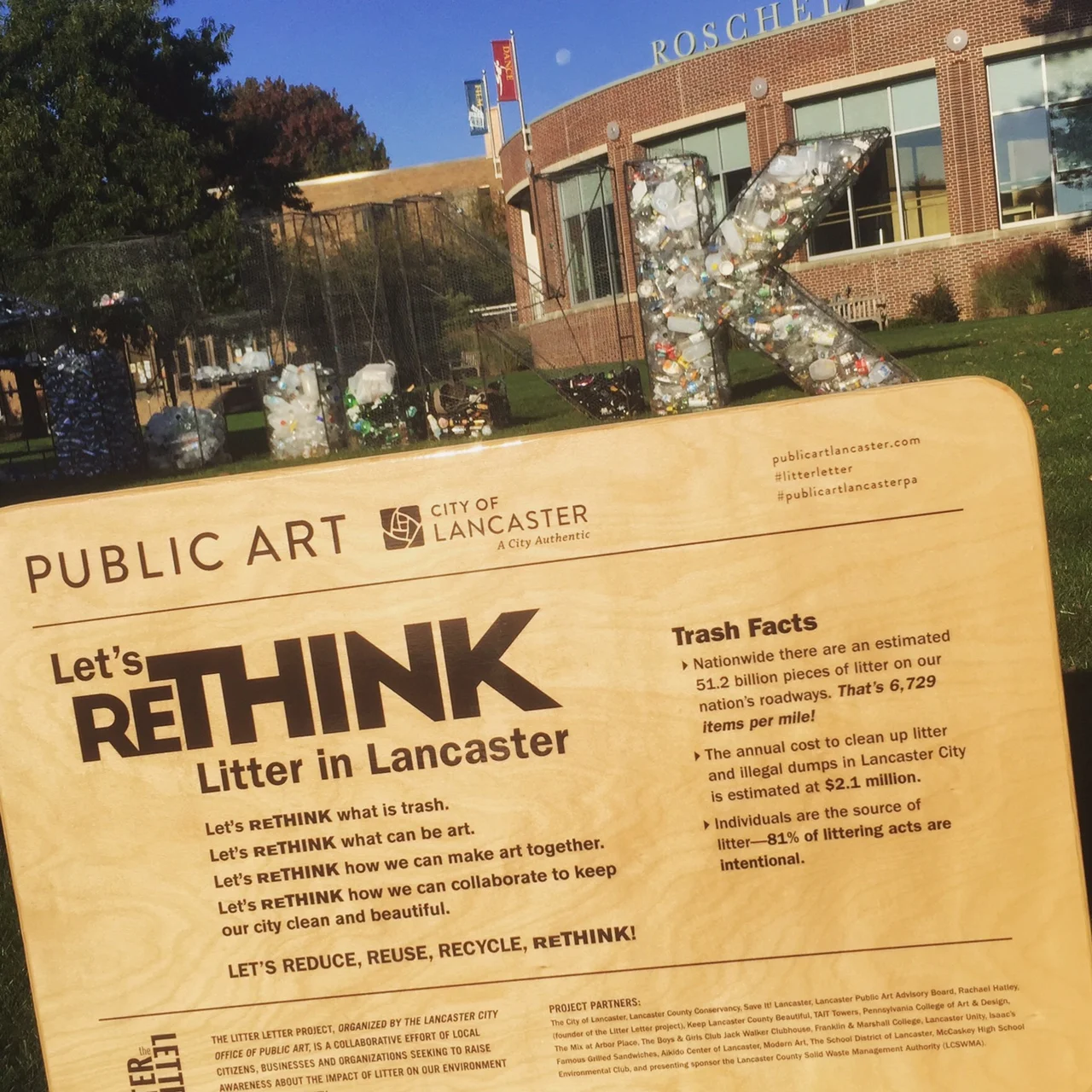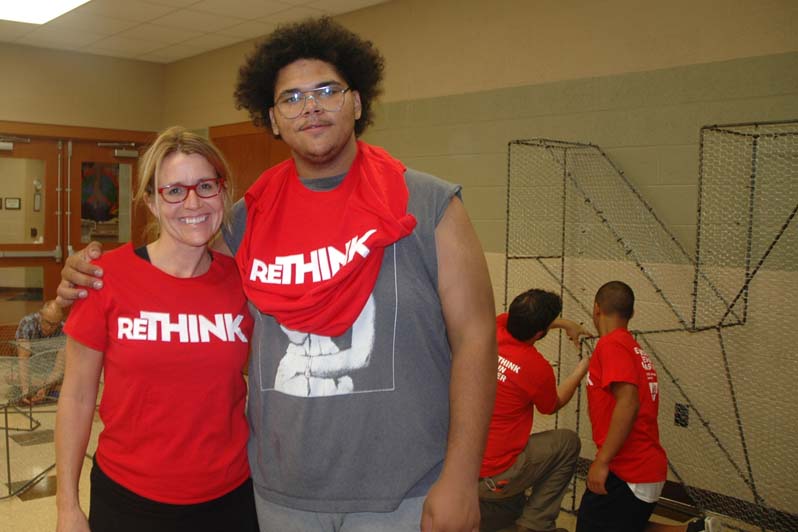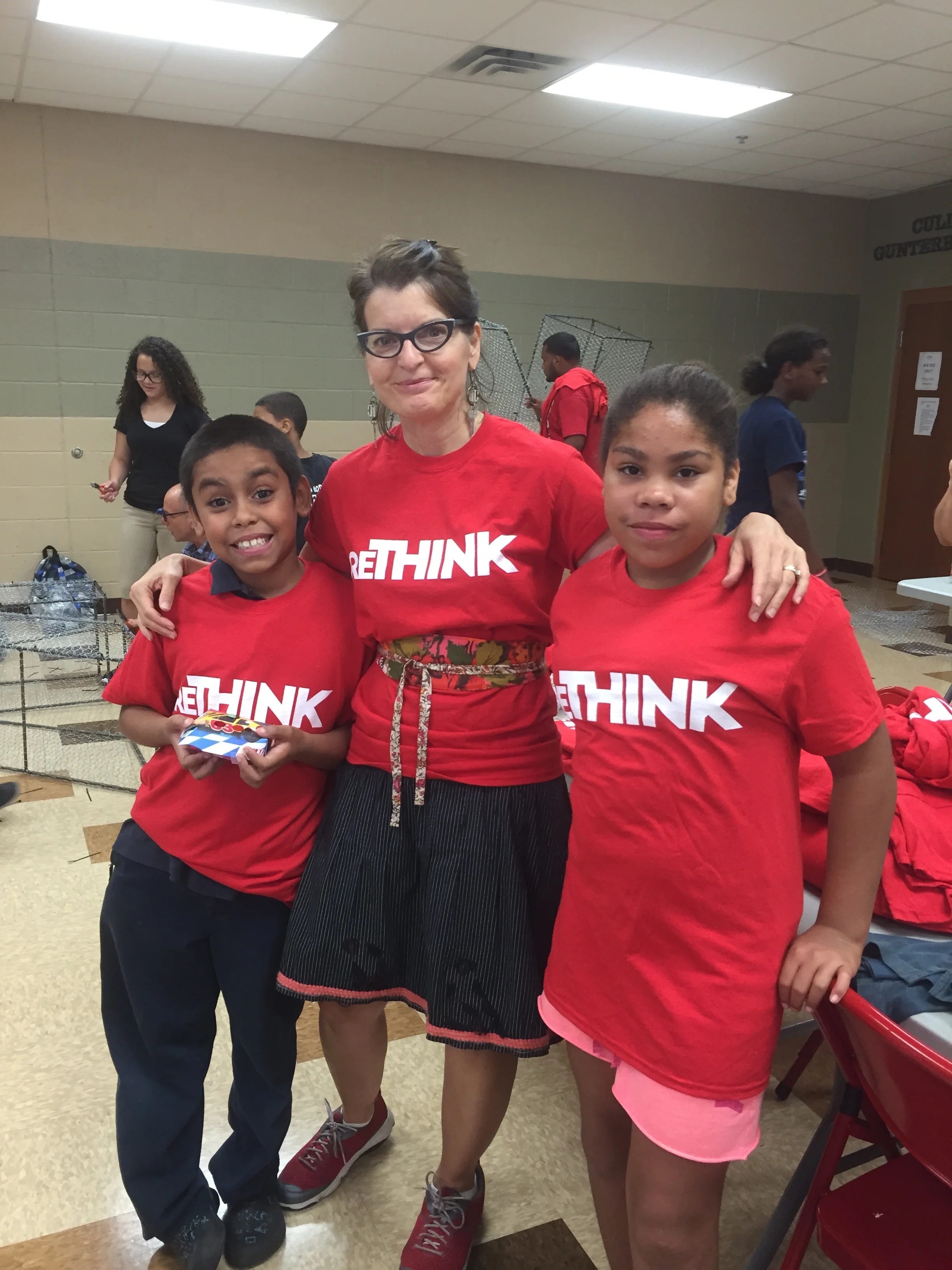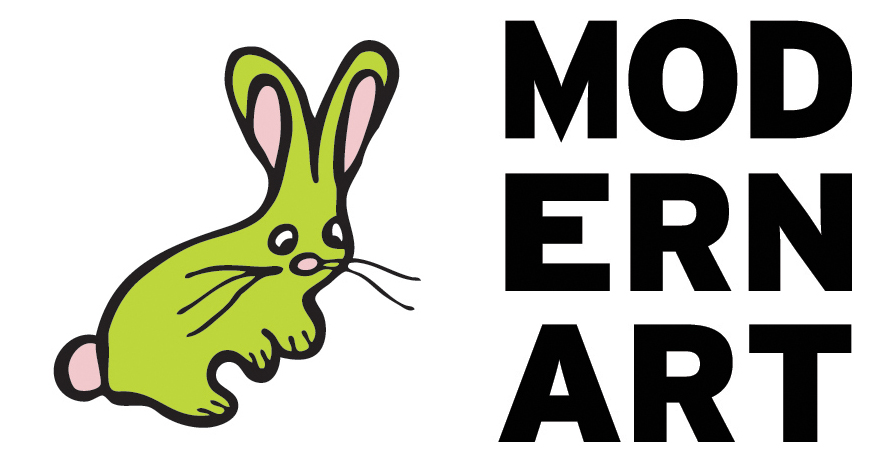Green infrastructure & stormwater strategy
It might sound a little nerdy, but we’re in it deep with stormwater communications. And boy are we are lucky: our hometown of Lancaster, PA, is one of the east coast’s leaders in green infrastructure and stormwater management. Thanks to a visionary government and water leaders, Lancaster looked into the future and made the right wager: that in order to strengthen the city’s aging infrastructure, keep our drinking water clean, help repair our waterways, and save our municipality from federal fines, they needed to invest in a comprehensive Green Infrastructure Plan rather than rely on classic “grey infrastructure”, (or the other classic “ignore the problem.”)
Modern Art worked with LIVE Green (now the Lancaster County Conservancy’s Urban Greening program) and the City of Lancaster to develop a strategy to persuade residents to help reduce over 750 million gallons of polluted water from flowing into the Conestoga River and eventually into the Chesapeake Bay. What emerged is the ground-breaking (literally) Save It campaign. We developed the campaign’s strategy, name, slogan, logo and look, materials, infographics, brochures and website design. The Save-It! Logo is everywhere. (Just look down… you’ll see it peeking up from the sidewalk storm drains all over Lancaster, on city vehicles and kiosks.)
After the success of the Save It Campaign, the Choose Clean Water Coalition reached out to Modern Art to research, write, and design an extensive Stormwater Communications toolkit . These toolkits have become an educational resource in cities throughout the Chesapeake watershed. We developed stormwater campaigns for Charlottesville, Petersburg, and Harrisonburg VA, and Harrisburg, PA. We worked with each of these municipalities to come up with comprehensive strategies to communicate the benefits of investing in green infrastructure to their citizens.
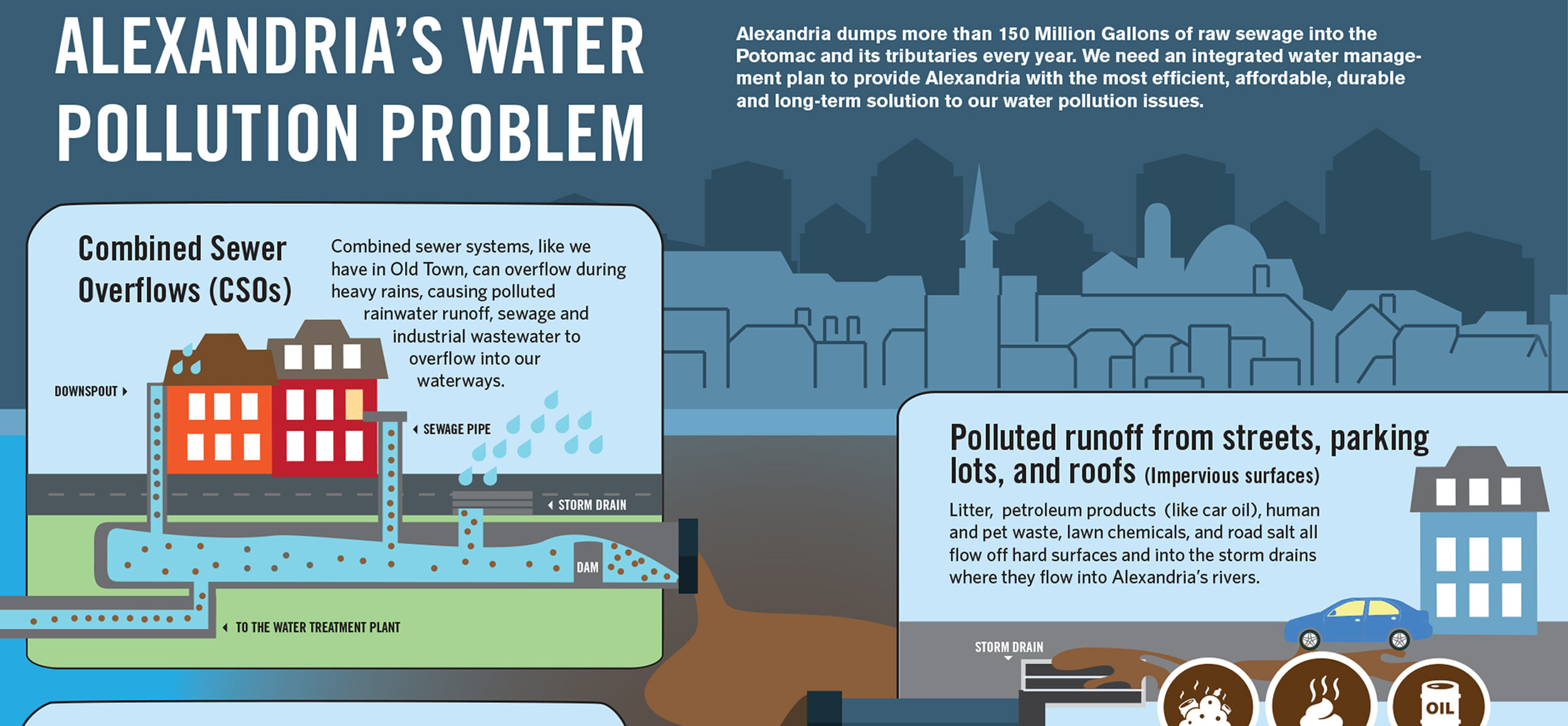
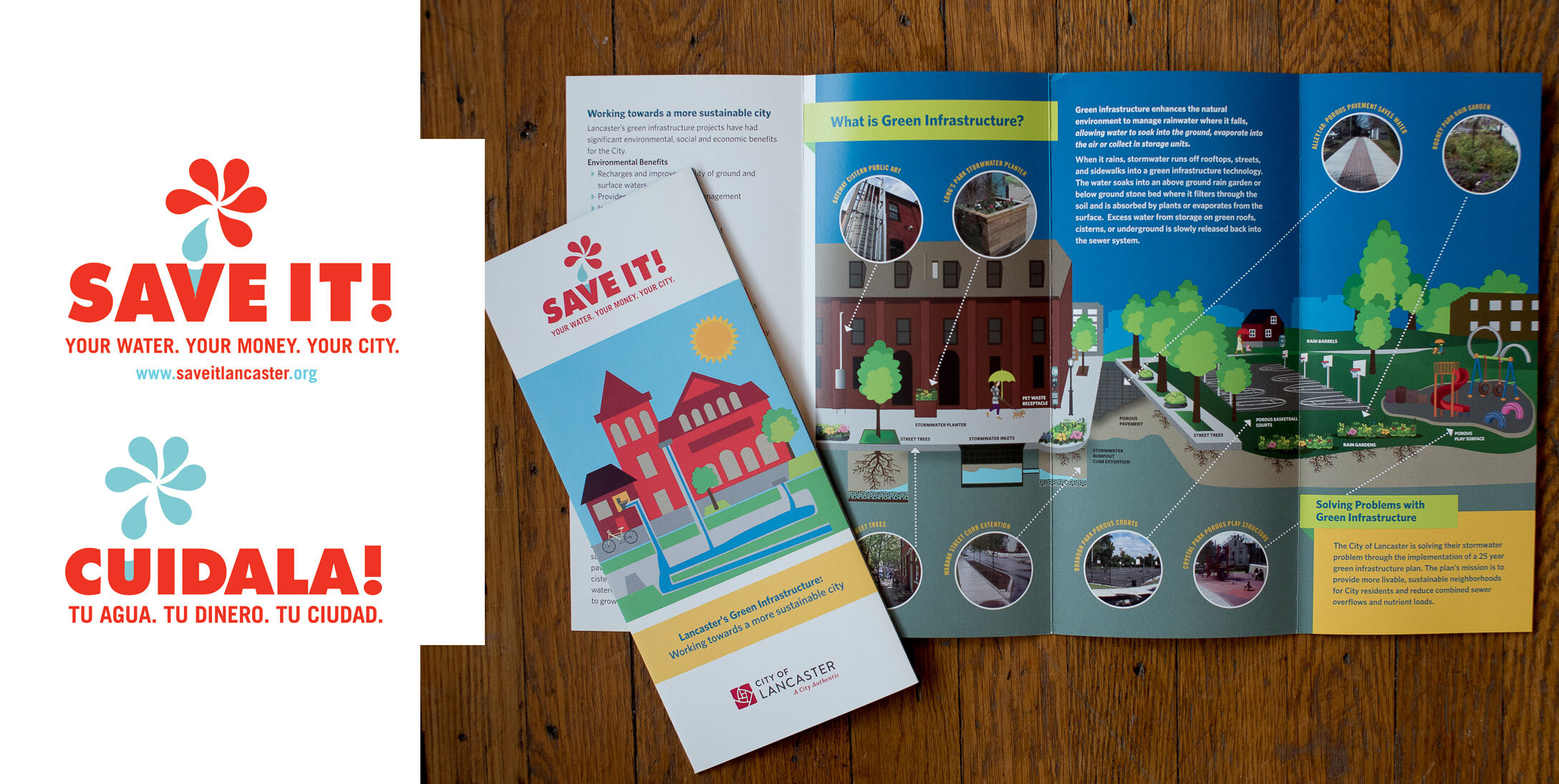

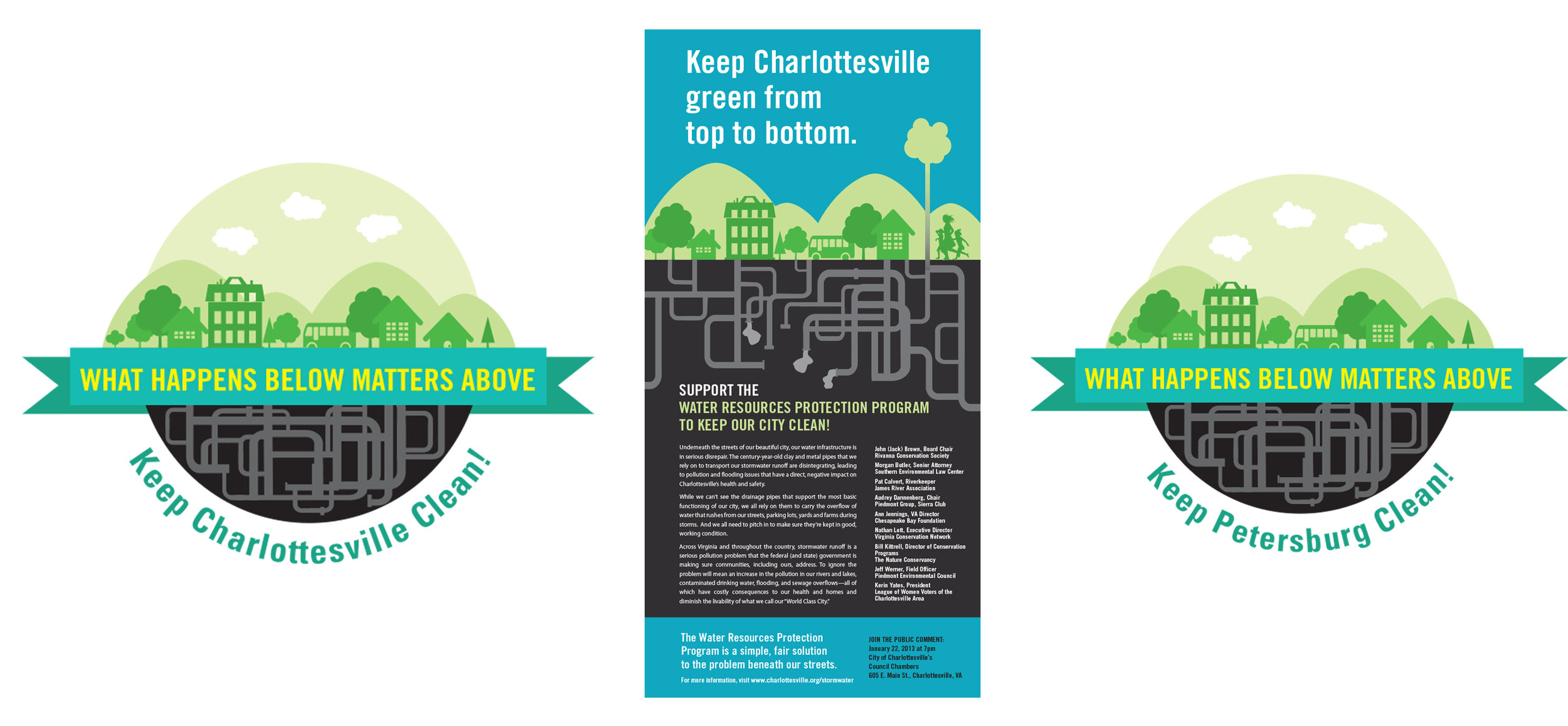
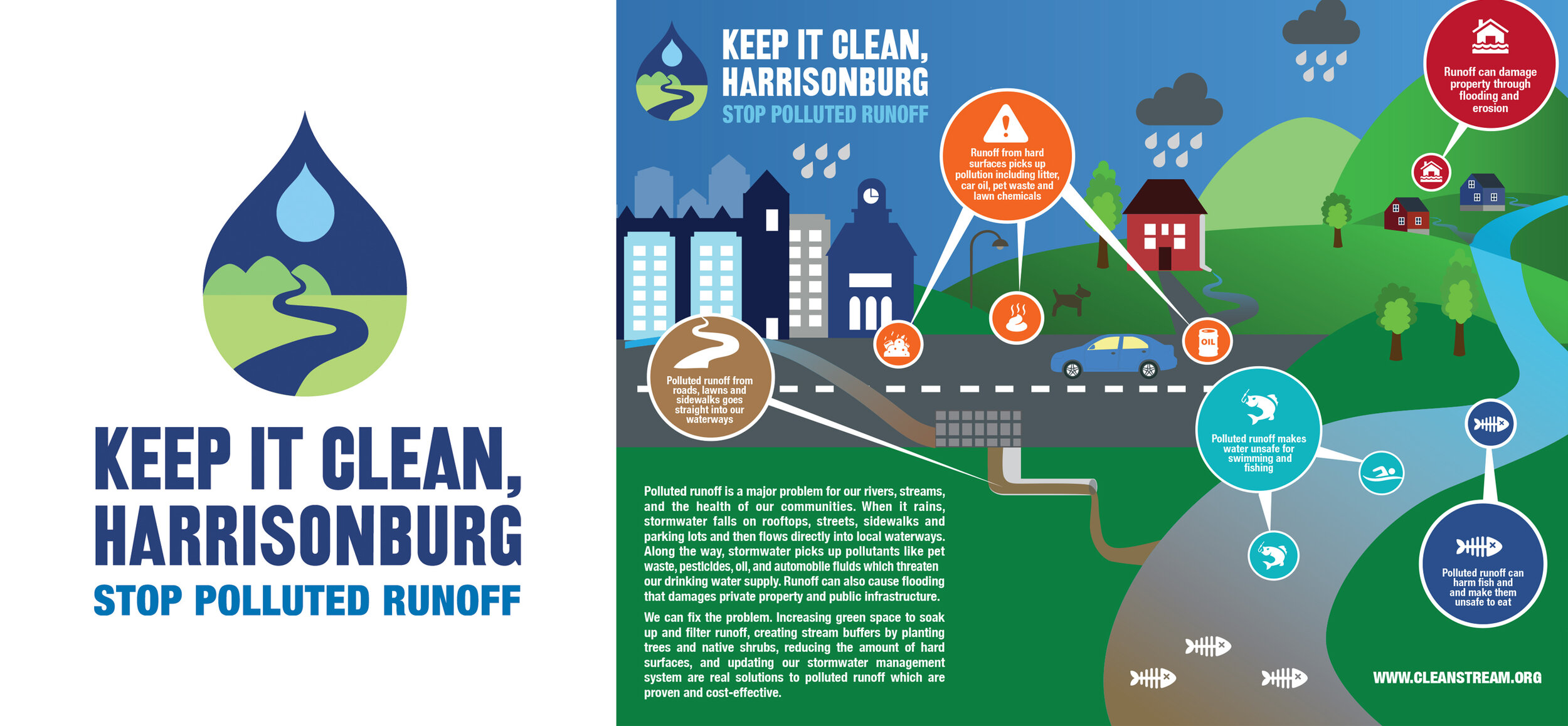

Most importantly, it was clear from our research that green infrastructure isn’t just about pipes, roofs and the mysterious acronym TMDL* , its about community engagement, parks, clean water, air and a livable city. It’s about the world we live in, and we live in that world together. In order to get this important message to our City’s residents, we knew we needed more than fact sheets, brochures and websites. We had to meet them where they are: in their parks, their streets, their restaurants, their schools, and present the issue in more than just words and pictures. As an member of Lancaster city’s Public Art board, Libby Modern advocated the city to invest in public art projects that addressed the stormwater issue, including an elegantly designed cistern at the Lancaster Brewing Company, an interactive fountain at Crystal Park, a solar-powered archway at the newly renovated Brandon Park, and the ReTHINK Litter Letter project. For each of these projects, we organized educational and collaborative events to make the projects not just about the final work of art, but about the whole reason the art is there: to make our city more livable. As the lead project manager on the Litter Letter Project, Libby worked with a committee of stakeholders and with artist Rachel Hatley on the concept, with residents on selecting the word (ReThink), and PCA&D typography students and TAIT Towers to design and fabricate the letters. The Committee organized events at the Mix at Arbor Place, Crystal Park and The Boys and Girls club to wrap the rebar, coupled with creative recycling art projects (led by Debbie Serdy of My Aunt Debbie), and neighborhood trash pickups. The project was installed on the front lawn of JP McCaskey High School, and has rotated through the City to Franklin Towers, F&M, and its current location, the New Holland Recycle Center.
Nerdy, maybe. But when your work helps create a cleaner, better world, boy is it worth it.

